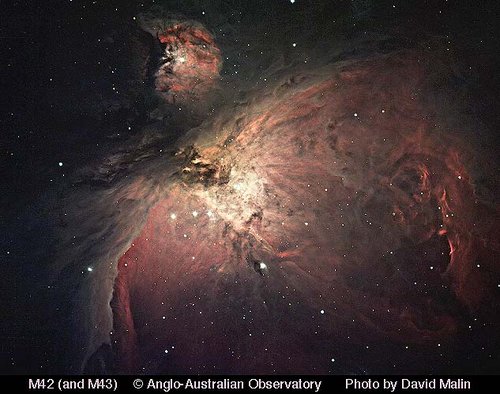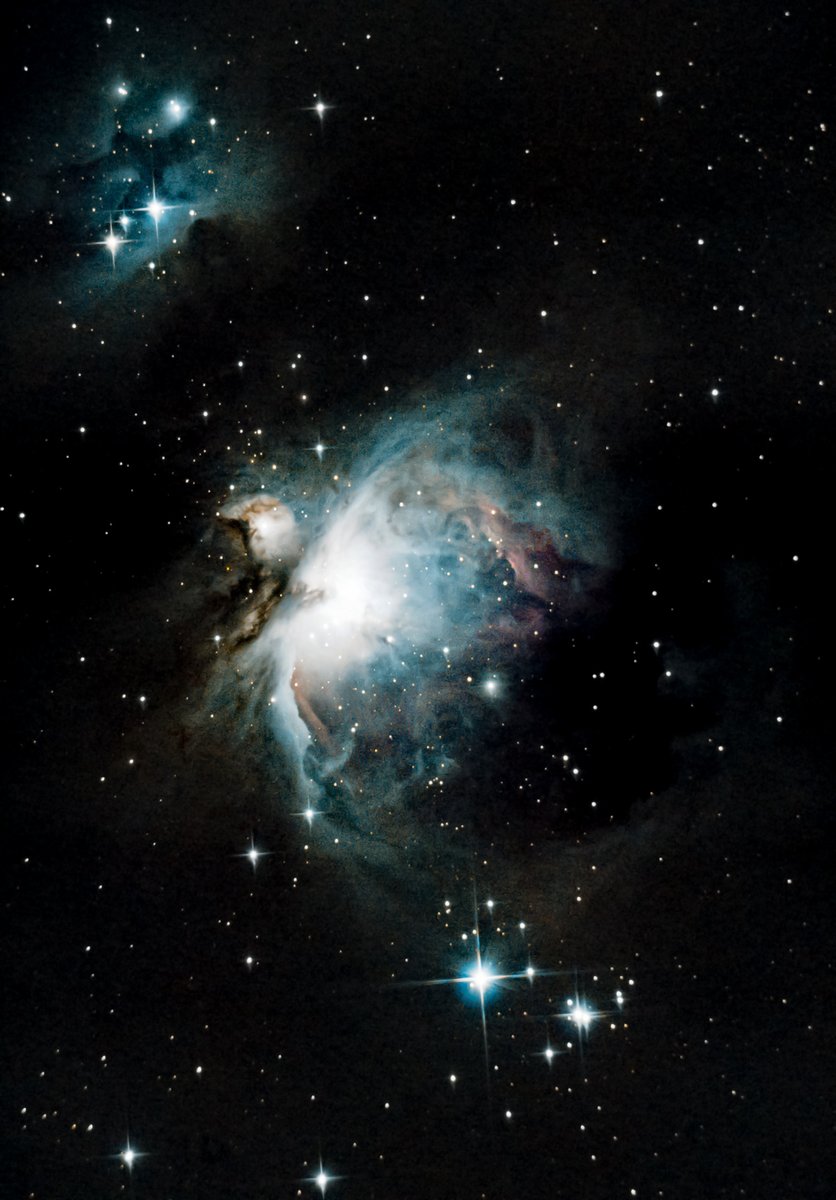Current Info for Observer
as of 07/27/2024 8:43 a.m.
Please login to view current observation details
General Info
| Type | Diffuse Nebula |
| Constellation | Orion |
| Right ascension | 5h35'17.200'' |
| Declination | -5°27'27'' |
| Magnitude | 4 |
| Distance | 1,600ly |
| Size | 85 arc min |
| Catalog Designations | NGC1976, M42 |
| Discovered | 1610 Nicolas Peiresc |
Generate a finder chart
The following form will generate a PDF finder chart suitable for printing using to locate objects in the sky with your telescope!
The Date is only really useful for solar system objects, as deep space objects move measurably only on a galactic timescale.
The larger the F.O.V (field of view), the more "zoomed out" the object will appear. It can be helpful to print several charts of the same object with different field of views.
Limiting the magnitude (remember, lower magnitude means brighter!) of stars and objects can make sure your chart is not cluttered with dim objects that you may not be visible to you anyway. The defaults are good, but try experimenting with raising and lowering the values.
254mm Dobsonian
30 points
Really windy, with the focus going in and out. Light pollution from the neighbors.
Orion XT8
30 points
Huge cloud. resembled to me a bird in flight with the head being the point with 4 stars (trapezium) in a cluster. When i put the 6mm EP on the cluster, i can see a very faint 5th star.
Celestron Omni XLT 150
0 points
M42 showed up bright and clear on the camera, after some processing (and help from a redditor) I ended up with this amazing shot.
10" Dobsonian
30 points
Celestron SkyMaster 15x70 Binoculars
30 points
It's great that I can see a bit of this nebula even in a suburban area with only binoculars.
Please login to post comments

